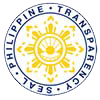The national government and the Commission on Higher Education (CHED) have strengthened their resolve to espouse the development of Land Use Plan (LUP) among SUCs in the country. In response to this challenge, the Mountain Province State Polytechnic College conducted a seminar write-Shop on land use planning on October 10-11, 2019 at the Travelite Hotel, Baguio City.The two-day write-shop was attended by the College President, the four Vice Presidents, the members of the Administrative Council, and concerned administrative staff. The organizing team also invited the Regional Director and Economic Development Specialists of National Economic Development Authority (NEDA-CAR).
Dr. Milagros A. Rimando, Director of NEDA-CAR emphasized that the land use plan is a physical aspect of the strategic plan of the College taking into consideration the principle of mobility thereby minimizing the travel of faculty members, students, staff, clients, and materials/information from one campus/building to another. In her lecture, Dr. Rimando explained the need and relevance of coming up with LUP. Primarily, the LUP addresses the provisions of Executive Order 75 of RA 113969 entitled “SUCs Land Use Development and Infrastructure Plan,” directing all departments, bureaus, offices, and instrumentalities of the government to identify lands owned by the government devoted or suitable for agriculture for distribution to qualified beneficiaries. Additionally, RA 11396 requires state universities and colleges to prepare and implement a land use development and infrastructure plan that shall include the construction of dormitories for students and housing sites for employees.
To guide the workshop and help realize the goals of the activity vis-à-vis the mandates of the College, Dr. Rexton F. Chakas presented the vision, mission, goal, and thrusts (VMGT) of MPSPC and its implications to the physical developments of the College. He also presented a diagram on developmental culture which illustrates the evolving culture as a result of a volatile and an increasingly complex environment which affirms and enhances existence, diversity, creativity, sensitivity, dialogue, reconciliation, and safeguarding of heritage in the four-fold mandates of MPSPC. The programs and plans, along with the major thrusts of the College embedded in the acronym HERITAGE was also presented and the interconnection on the aspect of the VMGT to land use planning was better identified and realized. He also highlighted the things that have to be taken into consideration in the land use planning such as the positioning of buildings, wind, velocity, shape of buildings, and the financial capability of the College.
Engineer Rose B. Amoy, the chair of the taskforce on landholdings presented the land assets of the College in the following campuses/extension: Bontoc campus with Faliling as an expansion site; Tadian campus; Paracelis Campus; Mt. Data campus; and the Victor S. Dominguez Research and Extension Development Center in Ba-ang Bauko. The land area, status, tenure and manner of acquisition of the lands were presented. The inventory of buildings and facilities of the different campuses were also shown as well as the land use maps and site development plans. The site development plans will still be subjected to review and modification to accommodate the future projects of the College, taking into consideration the principles and guidelines in land use planning.
The Executive Deans of Bontoc and Tadian campus presented the campus development of Bontoc and Tadian Campus. Dr. Christie Lynne C. Codod, Executive Dean of Bontoc campus presented the campus roles, physical developments, priority programs, past and projected population of students, and the past and projected number of faculty and staff in Bontoc Campus. With the increasing program offerings and projected increase of student population, the facility and faculty needs of the campus were identified. The sessions also considered the factors that influence the increase and decrease of students, faculty, and staff vis-à-vis the increase in additional program offerings and regularization of K-12 implementation. On the other hand, Dr. Hilary L. Tican, Executive Dean of Tadian Campus also presented the campus roles, physical developments, priority programs and proposed course offerings, issues and opportunities, and past and projected population of students, faculty, and staff in the campus. Long-, medium-, and short-term facility needs were also identified. After the presentation of outputs, Dr. Rimando advised that the growth rate of the projection of students’ population for both campuses has to be reviewed and rationalized.
During the writeshop, the participants were grouped according to their respective sectors since the same scheme would be used for the presentation of outputs. Dr. Annie Grail G. Ekid, VPRDE stated that one of the crucial issues being faced by the sector is the few research initiatives among faculty members so that they came up with an action plan to address such. Physical requirements of the projects of the sector were also assessed where the enhancement and modification of existing buildings to suit the project and construction of additional infrastructure was determined.
Dr. Codod, representing the academic sector presented the inventory of existing facilities of the campus, faculty needs per program, as well as the number of additional classrooms and facilities needed. Engineer Cleto Damacio, the College Engineer discussed the site development plan of the Faliling extension site and the main campus capturing their distance. Dr. Rogelio K. Balcita Jr., Vice President for Administration and Finance added that the construction of facilities in Faliling will decongest the main campus. Moreover, this undertaking is connected with the project of the provincial government as this will serve as a venue in hosting athletic meets and as an evacuation center.
Mr. Apollo Edwin S. Pagano, Chief Economic Development Specialist of NEDA-CAR, gave a lecture and key concepts on goals and objectives and principles for campus land use planning. He emphasized that the land use goals would be a general statement of the desired outcome of the College relating to the use of its land and other resources such as buildings, facilities, and technology.
Mr. Jeronimo B. Agaloos, Supervising Economic Development Specialist of NEDA-CAR gave a plenary discussion in the determination of a developable area. The campuses and extensions of the College were examined wherein the developable area of each lot was identified. He also gave instances of developable and non-developable areas. Criteria for site development as well as building design considerations was tackled and the use of green building and solar power was also emphasized. The establishment of escape route was also highlighted as this is essential in ensuring the safety of students and employees of the College during times of disaster.
After the series of plenary sessions, the participants crafted an action plan that includes the next steps to be undertaken. Other components of the plan include the key activities, the person/office involved as well as the timeline of activities as reference for the compliance of involved offices/individuals.











